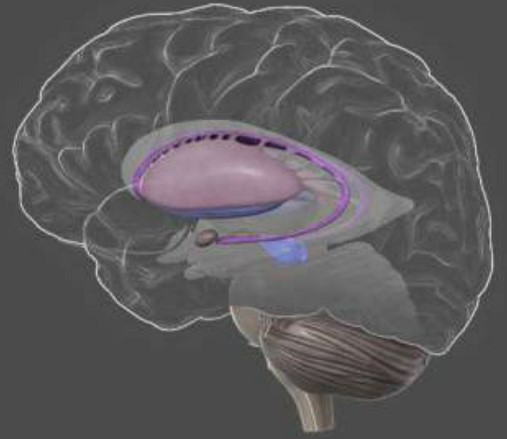Corticobasal degeneration is a neurodegenerative disease characterized by progressive death of neurons located in the central gray nuclei and part of the cerebral cortex (cerebral area located on the surface of the brain).
It is a rare disease (less than 1000 cases in France) described for the first time in 1968.
It begins, generally after the age of 60, with asymmetric apraxia of the upper limb (clumsy hand gestures) and gait disturbance (impression of stiffness, postural instability).

Neurons, dying, secrete less and less dopamine, which explains the appearance of motor disorders.
Corticobasal degeneration belongs to the “primary” atypical parkinsonian syndromes, a group of sporadic neurodegenerative conditions that also include multiple system atrophy and progressive supranuclear palsy.
Causes of corticobasal degeneration
The causes are not known at this time. We know, however, that the cases are overwhelmingly sporadic (the genetic component is almost non-existent).
Symptoms of corticobasal degeneration
Symptoms are similar to those seen in Parkinson’s disease. They begin from the age of 55 and worsen quickly, so that the cases of elderly patients are infrequent:
– clumsiness of a limb (more often an upper limb) with often bilateral and inaugural rigidity.
– Dystonia (involuntary muscle contractions) in a hand or arm that freezes part or all of the body in an abnormal attitude.
– Akinesia (slow initiation of movements with a tendency to immobility).
– Apraxia (loss of ability to perform movements or use objects, without any paralysis).
– Dysarthria (speech disorder. The patient has difficulty speaking and making sounds. The voice appears too deep or too high-pitched, hoarse and occasionally the patient is speechless).
– Disorders of executive functions.
– Aphasia (partial or total impairment of the ability to express oneself and understand spoken or written language).
– Agnosia (loss of the ability to recognize objects that we see or noises that we hear, while the sensory functions (vision, hearing, touch, etc.) are normal.
Treatment consists of prescribing the drugs used in Parkinson’s disease. Their therapeutic efficacy is low.
After three years of progression, almost all patients with corticobasal degeneration present with a motor syndrome of the parkinsonian type accompanied by significant rigidity, apraxia and gait disturbance.
Clinical case
Mrs. A., aged 75, admitted to a long-term care center (CHSLD, long-term care center in Quebec) after having suffered several falls.
Upon her arrival at the CHSLD (HEPAD in France), Mrs A. underwent a neurological examination and neuropsychological tests.
Neurological and neuropsychological assessment
– Extrapyramidal syndrome (parkinsonian type motor disorders) responsible for falls.
– The score on the mini-mental state examination (MMSE) 1 is 12/30, reflecting a moderate deficit.
– Spatial (but not temporal) disorientation.
– Language disorders.
– Very significant ideomotor apraxia (predominant in the right hemibody).
– Visuoconstructive apraxia.
– Disorders of executive functions.
– Attention disorders with psychomotor slowing.
– Difficulties performing mental calculations.
– Preservation of visual episodic memory.
– Preservation of visual gnosis.
– Preservation of verbal naming capabilities.
Neuroimaging examination
– Exclusion of a cerebrovascular accident.
– Brain scan reveals hypoperfusion (slow blood flow) of the parietal lobe.
The cerebral scintigraph is a medical examination consisting of injecting a radioactive molecule in order to highlight the shape and activity of areas of the brain.
Diagnosis: The patient probably has corticobasal degeneration.
